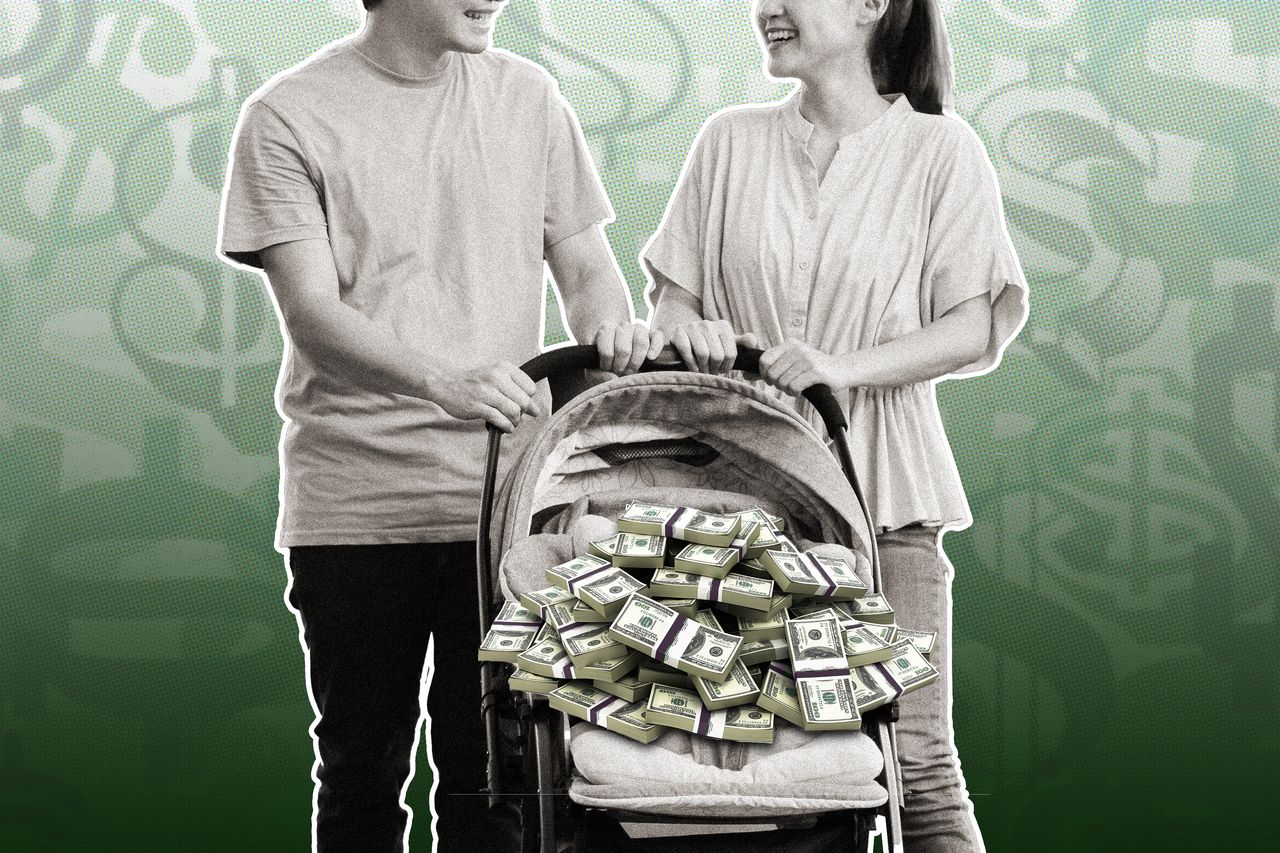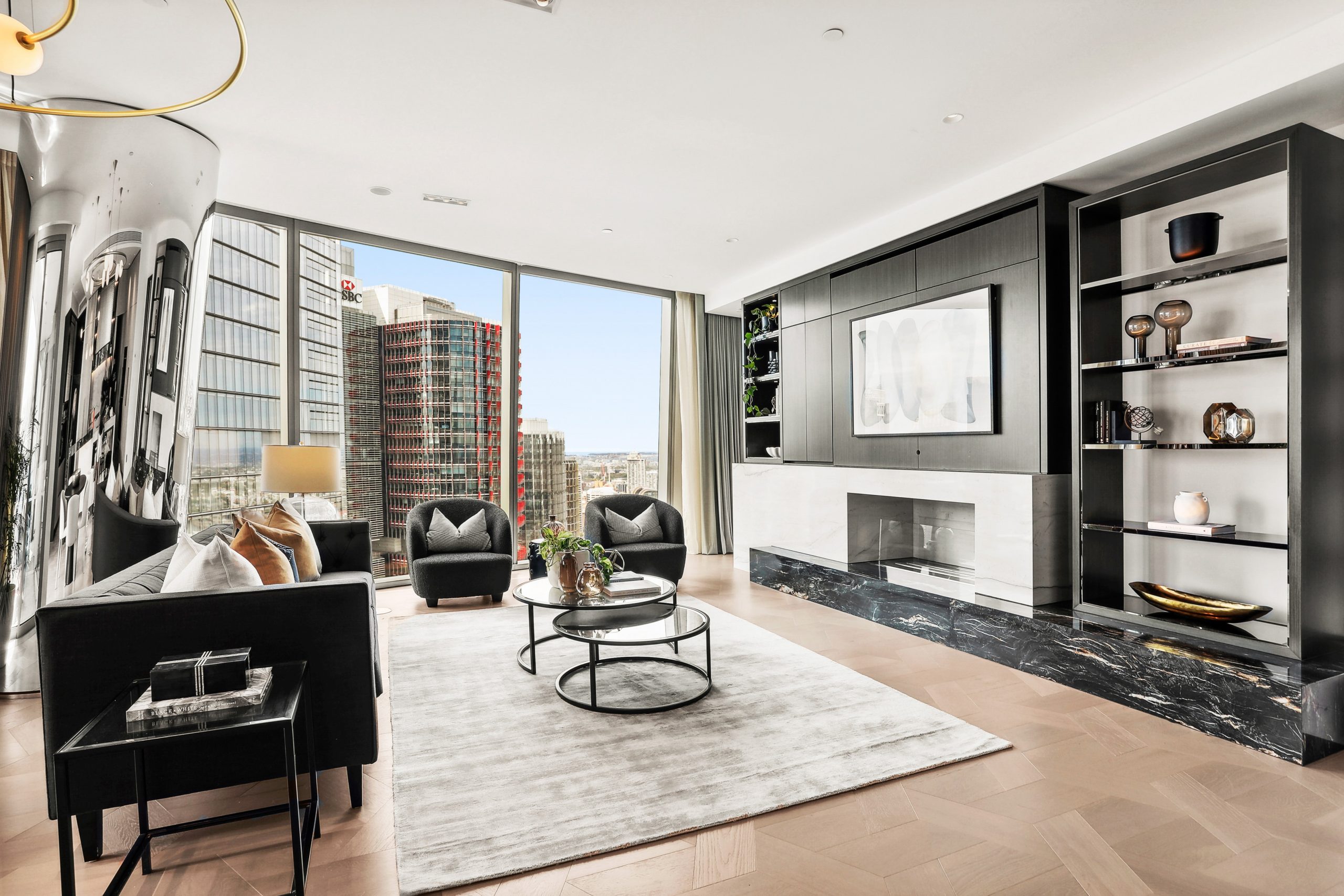The Couples Embracing the DINK Label
The ‘dual-income, no kids’ moniker is suddenly everywhere, and the lexicon has ballooned to include DINKWADs, SINKs and DINOs
Natalie and Keldon Fischer have no debt other than the mortgage from their Seattle condo, where they live with their Pomeranian, Noble. They each have six-figure salaries and hefty savings accounts. Last year, they traveled nearly every other month, including to Italy, Mexico, Thailand and Finland.
“I really enjoy being a DINK,” says Keldon, a 30-year-old software engineer.
DINK, of course, stands for “dual income, no kids.” It isn’t new slang, but suddenly, vocal DINKs are everywhere as more couples like the Fischers not only embrace the label but boldly let their DINK flags fly.
“Being DINKs means we just have a lot of freedom, time and money,” says Natalie Fischer, 25, a full-time content creator. She’s open to having children, but is first focused on building a net worth of $1 million by age 30. “I know that once I have a kid I will have to assume a lot of the caregiving responsibility and work less.”
Videos touting the DINK lifestyle now rack up millions of views on TikTok and Instagram. Most feature married couples sending the message that they don’t have kids yet (so stop asking), possibly never will, and life is fantastic, thank you very much.
Life as ‘DINKWADs’
The lexicon has ballooned to include DINKWADs (DINKs with a dog), SINKs (single-income, no kids). Some DINKs prefer “DINO,” for dual-income, no offspring.
There is even DINKY—for dual income, no kids, yet.
The public pronouncements represent a shift, says Zachary P. Neal, a psychology professor at Michigan State University who studies child-free adults. Though not all DINKs are strictly child-free, as some may have kids later, he says there is overlap in the groups.
“It has been for a very long time a sort of stigmatised category,” says Neal. “There are all sorts of stereotypes—things like…they’re self-absorbed, they have no stake in the future, they’re too focused on their career.”
But these days, DINKs are leaning into the label, thanks in part to the snowball effect of social media, Neal says, where DINKs are finding safety in numbers. “As some people start to openly identify as child-free, it creates an environment more open and welcoming.”
In a 2021 Pew Research Center survey, 44% of non-parents ages 18 to 49 said they were not likely to have kids ever, up 7% since 2018. Reasons included economic obstacles, concerns about the state of the world and simply not wanting to. And many young adults who do want children are having them later in life than previous generations.
The recent vocal DINK-dom is also generating backlash.
On social media, parents argue they do much of what DINKs do, just with kids in tow. Internet commentators and comedians are using DINKs as material.
“Childless couples are even more annoying than the imaginary children they complain about not even having,” said Lewis Spears, an Australian comedian. “They don’t seem to do anything with their free time except make videos about how much free time they have.”
‘We go where the wind blows’
Brenton and Mirlanda Beaufils, both in their 30s, have been together for over a decade, and say that they’re often questioned about whether they plan to have children.
But they are not ready to give up the flexibility of the DINK lifestyle.
On a trip to Las Vegas, for instance, they partied poolside, dined at the renowned Nobu restaurant, visited casinos and totally lost track of time and went to bed after 5 a.m.
And when Brenton, who is 32 and works in property management, was offered a new job that started in two weeks in another city, the couple made the move—from Boston to Dallas—happen in one week.
“We go where the wind blows,” says Mirlanda, a 30-year-old real-estate agent. “We love that about our relationship.”
In Dallas, they’re closer to Mirlanda’s sisters, including Preciana Prinstil, 29, who often jokingly wonders when Mirlanda will give her children some cousins.
“I want her to feel the love of kids and how they bring joy,” says Prinstil. “Even though they can be a headache.”
Others in the couples’ orbit are also curious. Mirlanda, who wants to be a mom one day, but isn’t in a rush, has a stock retort. “I’m like, ‘Oh, you guys ready to babysit for us? If you can’t answer that question, then stop.’ ”
Free to give mom a car
When Norelle Marquez was younger, she imagined having children at around age 24 or 25. But lately, the 26-year-old hasn’t seen them in her future.
Norelle, a professional photographer, and her husband Robert Marquez, a 28-year-old Marine Corps service member, have no debt, and stick to a firm budget for their Dallas household. “It’s fairly easy being DINKs,” says Robert.
Norelle appreciates that DINK life allows her to provide for family, including her mother, who raised her and her brother as a single parent. She has given her mother a new washer and dryer, house floors, an almost new Toyota RAV4 and more.
The couple posted a video on TikTok about the benefits and quirks of being DINKs, such as, “When we tell people we’re going to Disneyland on vacation, they think we’re weirdos.” It drew nearly 4,000 commenters, including some critics, but many declaring themselves DINKs.
“That TikTok has solidified my feelings about being a DINK and knowing that it’s OK,” says Norelle. “Family doesn’t have to be bloodline,” Robert adds.
Ultimately, whether to have children is a decision that can evolve, says Holly Hummer, a Harvard University Ph.D. candidate who studies women without children.
“We’re all sort of a SINK or a DINK for a portion of our lives,” she says.
 Copyright 2020, Dow Jones & Company, Inc. All Rights Reserved Worldwide. LEARN MORE
Copyright 2020, Dow Jones & Company, Inc. All Rights Reserved Worldwide. LEARN MORE
This stylish family home combines a classic palette and finishes with a flexible floorplan
Just 55 minutes from Sydney, make this your creative getaway located in the majestic Hawkesbury region.
Continued stagflation and cost of living pressures are causing couples to think twice about starting a family, new data has revealed, with long term impacts expected
Australia is in the midst of a ‘baby recession’ with preliminary estimates showing the number of births in 2023 fell by more than four percent to the lowest level since 2006, according to KPMG. The consultancy firm says this reflects the impact of cost-of-living pressures on the feasibility of younger Australians starting a family.
KPMG estimates that 289,100 babies were born in 2023. This compares to 300,684 babies in 2022 and 309,996 in 2021, according to the Australian Bureau of Statistics (ABS). KPMG urban economist Terry Rawnsley said weak economic growth often leads to a reduced number of births. In 2023, ABS data shows gross domestic product (GDP) fell to 1.5 percent. Despite the population growing by 2.5 percent in 2023, GDP on a per capita basis went into negative territory, down one percent over the 12 months.
“Birth rates provide insight into long-term population growth as well as the current confidence of Australian families,” said Mr Rawnsley. “We haven’t seen such a sharp drop in births in Australia since the period of economic stagflation in the 1970s, which coincided with the initial widespread adoption of the contraceptive pill.”
Mr Rawnsley said many Australian couples delayed starting a family while the pandemic played out in 2020. The number of births fell from 305,832 in 2019 to 294,369 in 2020. Then in 2021, strong employment and vast amounts of stimulus money, along with high household savings due to lockdowns, gave couples better financial means to have a baby. This led to a rebound in births.
However, the re-opening of the global economy in 2022 led to soaring inflation. By the start of 2023, the Australian consumer price index (CPI) had risen to its highest level since 1990 at 7.8 percent per annum. By that stage, the Reserve Bank had already commenced an aggressive rate-hiking strategy to fight inflation and had raised the cash rate every month between May and December 2022.
Five more rate hikes during 2023 put further pressure on couples with mortgages and put the brakes on family formation. “This combination of the pandemic and rapid economic changes explains the spike and subsequent sharp decline in birth rates we have observed over the past four years,” Mr Rawnsley said.
The impact of high costs of living on couples’ decision to have a baby is highlighted in births data for the capital cities. KPMG estimates there were 60,860 births in Sydney in 2023, down 8.6 percent from 2019. There were 56,270 births in Melbourne, down 7.3 percent. In Perth, there were 25,020 births, down 6 percent, while in Brisbane there were 30,250 births, down 4.3 percent. Canberra was the only capital city where there was no fall in the number of births in 2023 compared to 2019.
“CPI growth in Canberra has been slightly subdued compared to that in other major cities, and the economic outlook has remained strong,” Mr Rawnsley said. “This means families have not been hurting as much as those in other capital cities, and in turn, we’ve seen a stabilisation of births in the ACT.”
This stylish family home combines a classic palette and finishes with a flexible floorplan
Just 55 minutes from Sydney, make this your creative getaway located in the majestic Hawkesbury region.






















